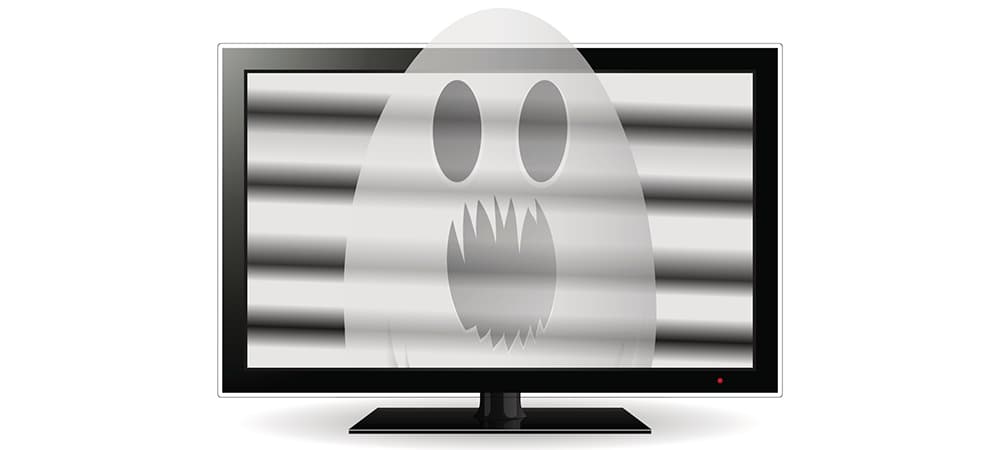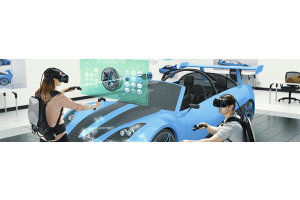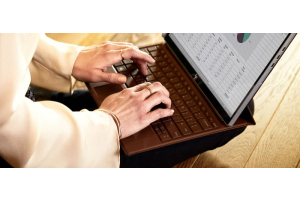We use cookies to offer you a better experience. For more information on how we use cookies you can read our Cookie and Privacy Policy.
What is Monitor Ghosting and How Do I Fix it?

While the image of a ghost may conjure something unsettling, monitor ghosting is not spooky. So no, you don’t need to have the Ghostbusters on speed dial. It’s actually a common monitor problem. In order to know how to fix monitor ghosting, we’ll start with understanding why, exactly, those otherworldly images linger on your screen along with a number of potential solutions.
While the image of a ghost may conjure something unsettling, monitor ghosting is not spooky. So no, you don’t need to have the Ghostbusters on speed dial. It’s actually a common monitor problem. In order to know how to fix monitor ghosting, we’ll start with understanding why, exactly, those otherworldly images linger on your screen along with a number of potential solutions.
What is monitor ghosting?
Monitor ghosting occurs when an image artifact appears as a trail of pixels behind a moving object, almost like a motion blur. This is referred to as ghosting because it creates a trace of the image that looks like a ghost.
Unlike similar effects such as image retention or monitor burn-in, monitor ghosting does not cause permanent effects to your monitor. However, it is still quite annoying, especially when playing high graphics games or online shooters. And whether you have an LED or LCD, ghosting can affect you.
There are numerous reasons why monitor ghosting occurs, including a faulty monitor cable, unoptimized monitor settings, and even other devices interfering with the monitor-to-PC connection.
What causes monitor ghosting?
Monitor ghosting is caused by the slow response time of a monitor relative to what is happening on screen. Of all the LCD monitor types, a ghosting monitor is most likely to be a VA panel because they have slower response times compared to TN or IPS panel types. However, this does not mean that all VA monitor panels cause monitor ghosting. In fact, monitor ghosting is not necessarily caused by the monitor panel at all.
What is ghosting in gaming?
Monitor ghosting is most prevalent, and perhaps most obnoxious, in gaming. Whether you are traversing through the sci-fi landscape of Cyberpunk 2077 or taking out enemies in Call of Duty: Black Ops Cold War, monitor ghosting can cause distortions that will sour your game experience. In gaming, monitor ghosting can cause eye strain and ruin your game by making the images look like they are on top of one another.
More often than not, if you notice blurry trails of pixels in your game world, but don't notice these effects once you turn off the game, the cause is monitor ghosting. It is most likely to occur when playing action games, sports games, and first-person shooters, because monitor ghosting occurs when there are multiple fast-moving objects onscreen.
How to fix monitor ghosting
Learning how to fix monitor ghosting is easy once you know your options. Unlike image retention or monitor burn-in, this is not a physical issue, so it is unlikely you'll have to send in your monitor to a technician in order to fix it.
To start, you will want to test your monitor to make sure that monitor ghosting is the issue at hand. Once you've identified the issue, you can then use the following steps to fix ghosting on your monitor and play games without any image refresh rate problems.
1. Monitor ghosting test
The first step to fixing any problem is to diagnose the issue. Fortunately, performing a ghosting test is easy. Go to Blur Busters UFO Motion Test and run the monitor ghosting test within your browser.
If you have no issues, you’ll see the green “Ready” signal. However, if you have any monitor ghosting issues, you'll see an orange signal with suggestions on what to fix. The tool will also explain any problems related to the frames per second, refresh rate, pixels per frame, and pixels per second for your display.
2. Turn on the overdrive function
Your first step in attempting to fix monitor ghosting is to turn on your device’s overdrive function. This feature is called something different for each manufacturer, but for most monitor brands, it’s simply referred to as the overdrive function. To access it, follow these steps:
- Access the on-screen display menu of your monitor
- Once in the menu, activate the overdrive function
- Activating this feature allows you to change the level of overdrive according to the refresh rate of your monitor
- You can get optimal performance at your preferred settings and eliminate or reduce monitor ghosting
Gaming monitors with AMD FreeSync or NVIDIA® G-SYNC technology often have the overdrive function turned on automatically, although you can adjust this manually if you need to.
3. Adjust monitor settings
Another easy way to fix monitor ghosting? Adjust your monitor settings. Because monitor ghosting is not necessarily a physical problem with your device, changing these settings may do the trick.
In particular, take a look at settings with the names Perfect Clear, Dynamic Contrast, Motion Smoothing, and Noise Reduction. All of these settings, particularly when viewing media with darker sections, may contribute to monitor ghosting. Experiment with turning them on and off one at a time to see if they reduce the ghosting effect.
4. Check connected devices and cables
While you can usually resolve ghosting issues through monitor settings, another possible explanation is a faulty cable or comes from other devices connected to your computer. When checking an HDMI, DisplayPort™, or USB-C cable, make sure there is no fraying or other damage.
Start by manually inspecting the wire, running your fingers along the length of the cord to see if there are any areas that may be frayed. This can lead to overheating, which can lower your monitor’s refresh rate. You can also troubleshoot your cables by testing them against a replacement cable to see if this reduces the issue.
You’ll also want to make sure the ghosting isn’t being caused by devices connected to your PC. This can even happen with some wireless tech, including printers, speakers, or even the modem. Sometimes, it’s a simple issue of proximity, which means moving those devices away from your monitor, which can stabilize the refresh rate and reduce or eliminate the ghosting.
5. Update graphics card drivers
If you play games regularly, then chances are you’re aware of the importance of keeping your graphics card drivers updated. If you don’t regularly update those drivers, then it is possible that a bug or compatibility issue is the root of the ghosting problem. Updating your graphics card drivers will also boost performance, and doing so at regular intervals can help you avoid other monitor issues.
6. Check monitor video port
If the culprit is not the monitor settings, a connected device, faulty cable, or an outdated graphics card driver, then the cause of the ghosting is likely physical. In this case, the first place to check is your monitor video port.
If you've exhausted all other options and you've determined that there is an issue with the monitor video port, you may not be able fix this issue yourself. If your monitor is under warranty, then you should consider sending it to a service centre or consulting a professional. Otherwise, you could bring it into a computer repair store and hope that they can replace the faulty parts.
If the monitor is beyond repair or simply too costly to fix, you may want to invest in a new device. If you prefer a display with all the connectivity options you need and stunning resolution, the HP U28 4K HDR monitor is a great pick. And for those in need of a new gaming monitor, the HP OMEN 25 gaming monitor more than fits the bill with a speedy refresh rate of 144 Hz.
Summary
Monitor ghosting isn’t as scary as the name implies, but it can still cause you headaches. It’s a particularly annoying problem for those who use their PCs for graphics-heavy work such as video editing, graphic design, or image editing, as well as hardcore gamers who want to get the best performance possible out of their PC. Fortunately, the steps for how to fix monitor ghosting are much easier and less costly than other issues such as image retention and monitor burn-in.
If you believe your PC is experiencing monitor ghosting, the best thing to do is to test out the issue to confirm your suspicions. If the monitor ghosting test confirms the problem, then make sure that you troubleshoot with the above steps before sending it in for repairs. Because the ghosting is often not a physical problem with your monitor, chances are you can solve this issue on your own with a little detective work and some simple fixes.
About the Author: Daniel Horowitz is a contributing writer for HP® Tech Takes. Daniel is a New York-based author and has written for publications such as USA Today, Digital Trends, Unwinnable Magazine, and many other media outlets.
Article reposted with permission from HP Tech Takes






